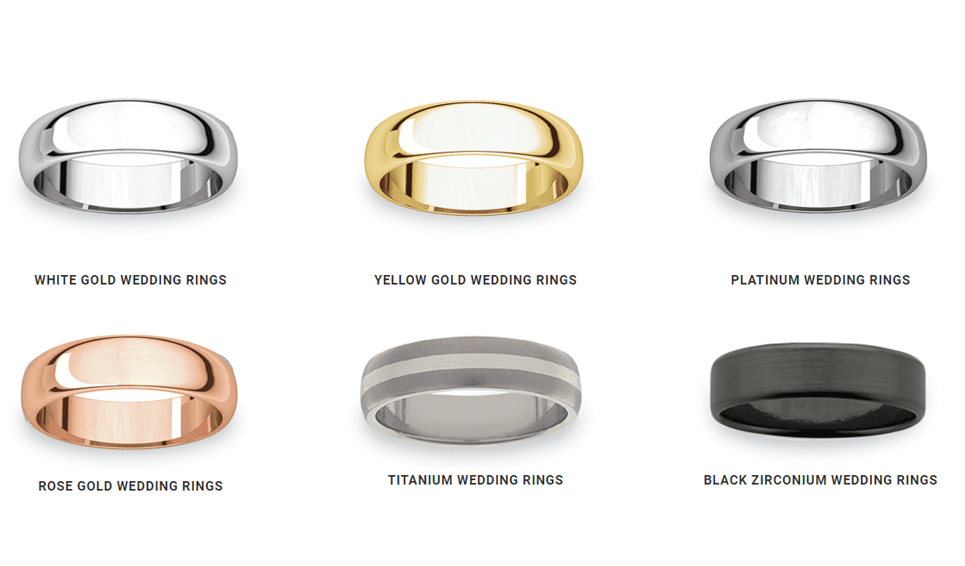A wide range of precious metals are available to construct a diamond ring. The most popular metals are white or yellow.
Gold Jewellery
Gold has been cherished for millennia as a symbol of wealth, beauty, and prestige, and its versatility in jewellery crafting is unmatched. While yellow gold is the most traditional and classic choice, modern jewellery design has introduced variations in colour, including white and rose gold.
- With its warm and radiant hue, yellow gold has been a staple in jewellery-making for centuries. Its timeless appeal makes it popular for engagement rings, wedding bands, and heirloom pieces. Yellow gold’s rich colour adds a touch of luxury and sophistication to any jewellery design, making it a favourite among those seeking traditional elegance.
- White gold offers a contemporary twist on classic gold jewellery. Created by alloying gold with white metals such as nickel, palladium, or silver, white gold has a silvery-white appearance that resembles platinum. Its neutral tone complements a wide range of gemstones, making it a versatile option for modern jewellery designs.
- Rose gold, also known as pink or red gold, has gained popularity recently for its romantic and feminine appeal. Created by alloying gold with copper, rose gold has a warm, blush-pink hue that exudes elegance and charm. Its subtle yet distinctive colour makes it a unique choice for engagement rings, earrings, and other statement pieces.
Whether adorned in yellow, white or rose gold, each variation offers its allure and charm, allowing individuals to express their style and taste through jewellery choices. With its timeless beauty and enduring value, gold remains a cherished metal in jewellery, captivating wearers with its radiant brilliance and unparalleled elegance.
Platinum Jewellery
Platinum is prestigious in fine jewellery, prized for its rare beauty and enduring qualities. Renowned for its naturally white hue, platinum is hypoallergenic and resistant to tarnishing, making it an ideal choice for crafting exquisite jewellery pieces. Its remarkable durability ensures that platinum jewellery withstands the test of time, retaining its lustre and brilliance for generations. Jewellery artisans appreciate platinum’s malleability, allowing intricate designs and delicate detailing to be easily realised. Additionally, platinum’s density provides a secure setting for precious gemstones, enhancing their brilliance and longevity. From engagement rings to timeless necklaces and bracelets, platinum jewellery exudes sophistication and elegance, captivating admirers with its understated allure. As a symbol of enduring love and timeless beauty, platinum remains a cherished choice for those seeking luxury and craftsmanship in their jewellery selections.
Palladium Jewellery
Palladium, a lustrous, silvery-white metal, belongs to the platinum group of elements. Named after the asteroid Pallas, it was discovered in 1803 by William Hyde Wollaston. This rare metal possesses remarkable catalytic properties, making it indispensable in various industrial applications. Its exceptional ability to absorb hydrogen has also led to its use in hydrogen storage and purification processes. Moreover, palladium has extensive applications in the electronics industry, where it is used in capacitors, connectors, and multilayer ceramic capacitors (MLCCs). Jewellery artisans favour palladium for its durability, hypoallergenic properties, and its similarity to platinum, offering an elegant alternative for crafting timeless pieces. With its diverse applications and scarcity, palladium remains a valuable and sought-after element in modern industries and artisanal crafts.

